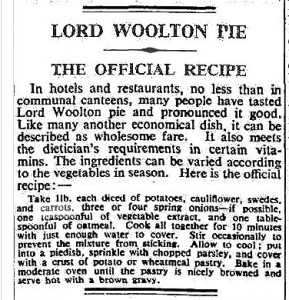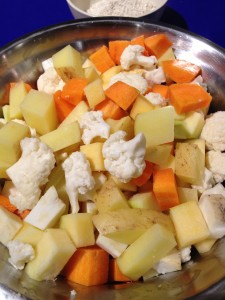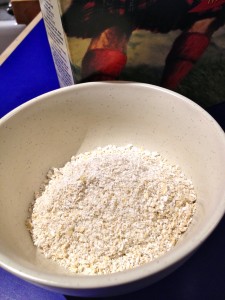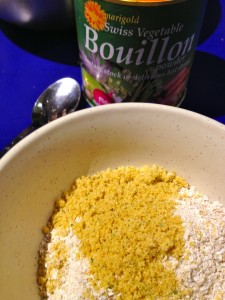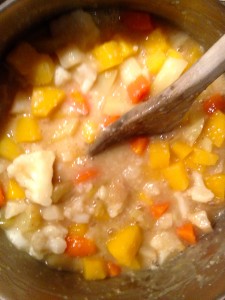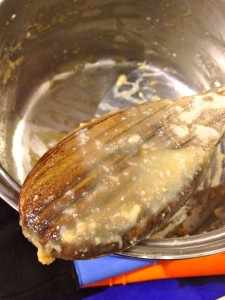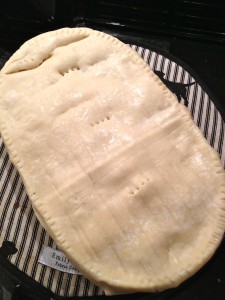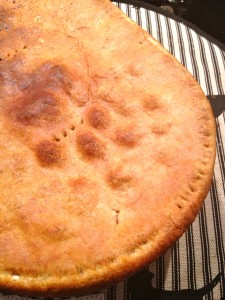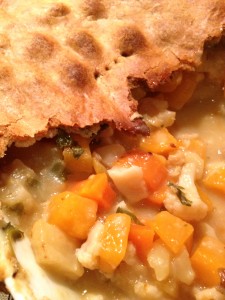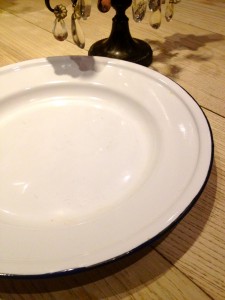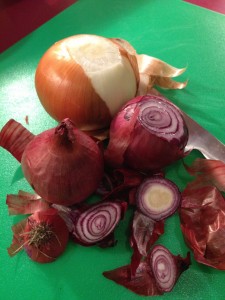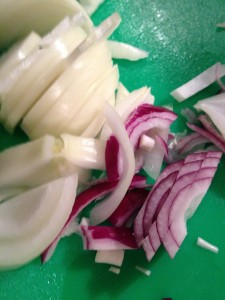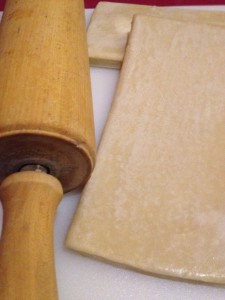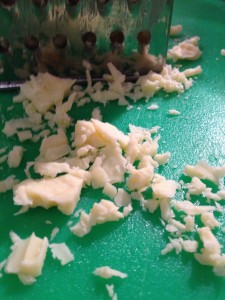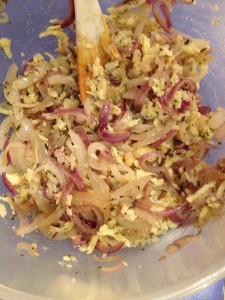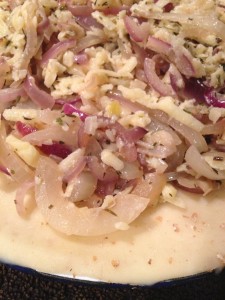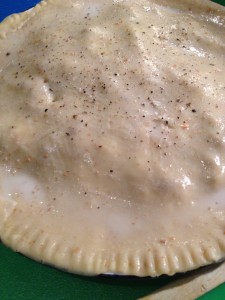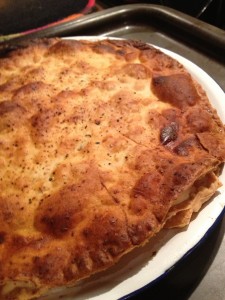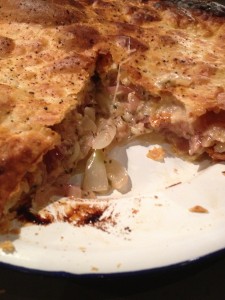Writing about old family dishes led me to reading about Woolton Pie. This second world wartime invention was presented as a nutritious and filling dish in an effort to keep a nation on it’s feet. Apparently invented by the chef at the Savoy hotel in London and named after the Minster of Food, Lord Woolton. Lord Woolton had the unenviable job of trying to keep the food resources rationed out in a war depleted country. He was apparently relentlessly chipper about the various hardships facing the households of the time and although this dish was largely dismissed by the public it remains as testimony to the popularity of the man it was named after.
The recipe was published in The Times in April 1941:
You know me well enough to know that I can’t resist having a go at this and then attempting an updated version for my so-called ‘modern’ tastes. Actually I can never resist a pie…! I also think it’s interesting to note the recipe calls for a wholemeal pasty crust.
The initial decision as to whether you are going with a potato topping or a pie crust also determines the contents of the pie. Potatoes are the main focus of the decision making process as they will feature somewhere either mashed on the top or added to the filling. I like the idea of this being an actual pie (albeit a single crust so not really a proper pie) so I’m going with the pastry…
Well, I’m falling at the first hurdle as I don’t have any spring onions, and I can’t be faffed to go to the local shop, so I’ll fling a few bits of onion in and hope for the best. My instinct is that it’s not going to make that much difference as I’m not exactly holding out for the taste revelation of the century.
If you are going with the mash topping then bung the potatoes on to boil. Then chop up all the vegetables in vaguely equal size bits. The skins left on the potatoes definitely (whether for the top or the filling – there’s a fair bit of nutritional value just under the skin – don’t lose it!) and cauliflower can be left bigger if you like but don’t get too OCD, but it will mean they’ll all cook evenly – really it’s more about the aesthetics and mouth feel (can’t believe I just wrote that…!) It’s wartime so it’s the least of the problems facing the cook! Anyhoo…
The addition of oatmeal is to serve as a thickener. I whizzed a handful of oats in the whizzer machine and made it as fine as possible. The end result will leave a soft grainy texture to the dish so factor that into the decision about oatmeal size…or just fling the oats in! The vegetable extract mentioned has puzzled me. The dividing thought seems to be that it was like a bouillon (I didn’t have a liquid one so I used dried) or was actually Marmite (or some such). So I made a pan of each to sample the difference. It is suffice to say the flavour difference is subtle – to even give it that much credit!
With dried bouillon powder on the left and Marmite on the right:
Cook all this for about 10 minutes (it’ll get finished off, as-it-were(!), when it bakes) and it will thicken up as it simmers. Transfer the whole thing to the pie dish. Below is a picture of what I mean by the soft grainy texture to the filling created by the oatmeal. It makes no difference to the taste (apart from the blandness) but it’s not the smooth texture we are all used to. I don’t mind it at all and can’t help but think that it is a healthier alternative to flour and butter as a roux or just tipping in cornflour. Oats have soluble fibre (beta-glucans) which are thought to reduce cholesterol (although no one really knows exactly why…who needs to know? After all we put a man on the moon what more could we want…) and they keep you fuller longer as they are a slow release of energy. They have lots of lovely antioxidants and minerals too so…get involved!
Sprinkle some parsley over it. I keep a bunch of parsley in the freezer and just snap bits off when I need them. The size of the bunches now are silly and they invariably go off before you’ve managed to get through ‘one hundred ways with herbs’, so the freezing option is a good one. Herbs are a brilliant source of nutritional bliss and a quick and easy way to add a dose of goodness to anything you are making. Keep a selection of the darlings frozen in a state of readiness in the freezer to unleash at a moments notice. Parsley is a fierce opponent to free radicals and it’s volatile oils a great friend in the battle against cancer (especially lung, colon and prostate), it has a good dollop of vitamin C (and iron which work in synergy together for maximum absorption) and vitamin A (beta-carotene) – these strengthen your immune system, connective tissue, skin, hair, bones and teeth…and assist with wound healing and fighting infection! Phew! – It also has a good slug of vitamin K which assures that the blood clots and the bones are strong. Folate is present in parsley and this B vitamin is essential in the regeneration of the body. Parsley also has anti-bacterial qualities and aids digestion. Crikey…
I didn’t make the pastry. No way. Life’s too short. I rolled out some I had in the freezer and flung it on (no it wasn’t wholemeal…forgive me father for I have sinned…) and I didn’t brush it with milk or egg as I’m pretty sure the wartime cook wouldn’t have done that either.
I peered into the depths of it when it was cooked and, although it didn’t smell bad, it’s pallid gloopiness didn’t really grab me in a way I might have hoped. I’m sure this is part prejudice at the idea and part because The Mother sneered so openly and completely at the idea, and wouldn’t even entertain going along with the experiment, as she was clearly traumatised by the real thing many a moon ago. Growing up poor during and after the war was no picnic and the rosy tint of retro cooking doesn’t cut the mustard, apparently!
…but, in truth, it wasn’t half bad! (the pie not growing up in the war…) Truly! I’ll admit a tad plainer than modern tastes perhaps but nonetheless quite palatable. What shone through was the simple tastes of the root vegetables. I then had it with a layer of mature cheddar between the crust and the vegetables, which was a hit. I think there is mileage in this dish and it could be a great accompaniment to a roast dinner for example. Hmmm…I shall experiment no doubt! I shall unleash it on unsuspecting guests (not The Mother as she is now on high alert) and see what they say…watch this space!
This recipe is oh so adaptable. Onions in the mash or in the filling, seasonal combos galore, creamier sauce or drier stacked filling and so on…let your spirit and cooking soul guide you and create your very own version which you must instantly name and claim as yours…and tell me how it goes!
The humble potato, the staple of millions of tables has a fair bit to offer though so rethink your opinion and, more importantly, your cooking methods. First don’t believe everything you read about GI indexes and all that because, in truth, the results vary hugely depending on considerations like type, origin, the method of cooking, even the temperature they’re eaten at, all play a part in how it breaks down in your body. Complex carbs keep you fuller longer and release slower so you have sustained energy. Potatoes have vitamins (notably C – just under the skin), minerals, fiber and a handful of those handy phytochemicals (plant compounds that are thought to help fight diseases) we need. Carrots are a fab source of beta-carotene. Beta-carotene has antioxidant properties that help prevent ageing damage to your cells, fights cardiovascular issues and the vitamin A that the liver creates from it keeps skin, hair and nails healthy, flushes toxins from the liver and helps your retinas stay in tip top condition. Phew! The swede originated in Central Europe some say while others go with Sweden obviously but was originally just used to feed cattle. It has good food benefits for humans too! High in potassium and vitamins A, C, E and K. Great for fibre too. Cauliflower is also a good source of vitamin C and also the mineral manganese (essential for strong bones and helps the metabolic progression of the body in many ways and assists with the maintaining of connective tissue, absorption of calcium, thyroid operation, regulates blood sugar and sex hormones (well, hello, cauliflower…). It is also a powerful antioxidant protecting the body from cancer causing free radicals). Cauli has lots of B vitamins and is anti-inflammatory (the cause of many chronic diseases in our bodies), and is therefore beneficial for the cardiovascular and digestive systems too.
Root vegetables generally rock!
